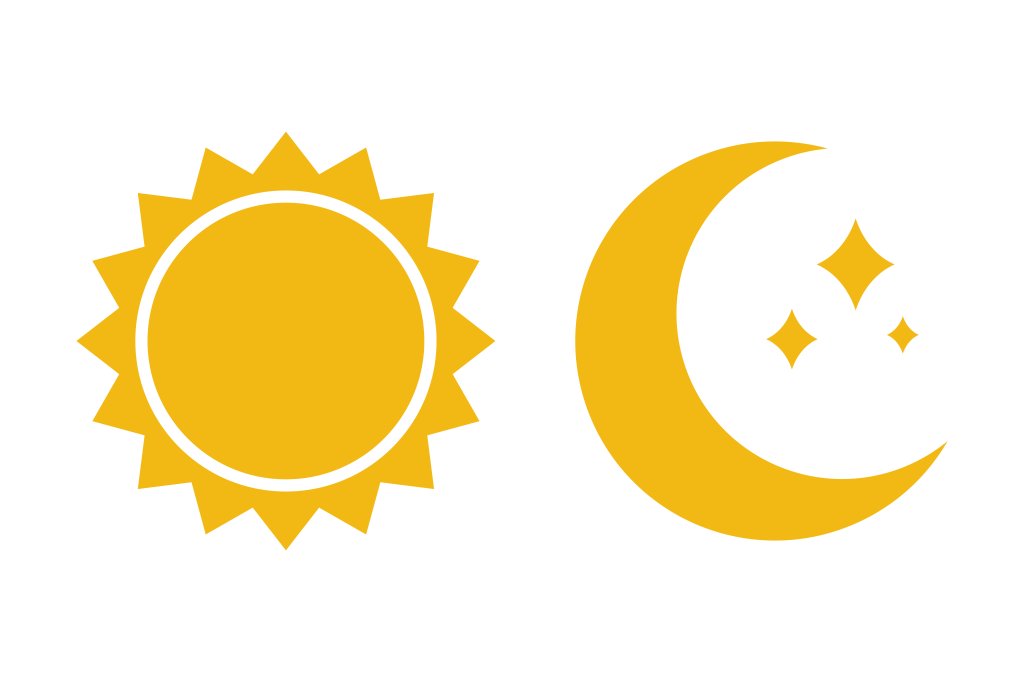Hello, language learners! Today, we’re going to demystify one of the most fascinating aspects of Arabic letters: the Sun and Moon consonants. Understanding this simple rule will instantly improve your pronunciation and make your Arabic sun and moon-related words sound more natural.
Arabic Sun and Moon Letters Using Arabic Letters
In the Arabic alphabet, the 28 Arabic Consonants are divided into two equal groups of 14: the Sun Letters and the Moon Letters. This division doesn’t change how words are written, but it has a significant impact on how you pronounce the definite article “al-” (اَلْ).
The names come from two famous words:
- The Moon Letters are named after the word for “the moon”: “al-qamar” (اَلْقَمَر).
- The Sun Letters are named after the word for “the sun”: “ash-shams” (اَلشَّمْس).
The Moon Letters (Al-Huruf Al-Qamariyyah)
When a word begins with a Moon Letter, the “l” sound in the definite article “al-” is pronounced clearly and distinctly. Think of it like a silent “al-” that isn’t actually silent.
Example: The word for “moon” is “qamar” (قَمَر). When you add “the” (al-), it becomes “al-qamar” (اَلْقَمَر). You can clearly hear the “l” sound.
The 14 Moon Letters are:
Here is a table of the Arabic “moon letters” (Al-Ḥurūf al-Qamariyyah), along with an example word for each, demonstrating how the definite article “ال” (al-) is clearly pronounced before them.
| Letter | Example Word (Arabic) | Example Word (Transliteration) |
|---|---|---|
| Hamza (ء) | الْأَسَد | al-asad |
| Bāʾ (ب) | الْبَاب | al-bāb |
| Jīm (ج) | الْجَمَل | al-jamal |
| Ḥāʾ (ح) | الْحُبّ | al-ḥubb |
| Khāʾ (خ) | الْخُبْز | al-khubz |
| ʿAyn (ع) | الْعَيْن | al-ʿayn |
| Ghayn (غ) | الْغُرْفَة | al-ghurfah |
| Fāʾ (ف) | الْفَم | al-fam |
| Qāf (ق) | الْقَمَر | al-qamar |
| Kāf (ك) | الْكِتَاب | al-kitāb |
| Mīm (م) | الْمَاء | al-māʾ |
| Hāʾ (ه) | الْهِلال | al-hilāl |
| Wāw (و) | الْوَرْدَة | al-wardah |
| Yāʾ (ي) | الْيَد | al-yad |
The Sun Letters (Al-Huruf Ash-Shamsiyyah)
Now for the Arabic sun part of the mystery! When a word begins with a Sun Letter, the “l” sound in “al-” is not pronounced at all. Instead, the first consonant of the word is doubled, which is indicated by a shaddah (ـّ) over the letter.
- Example: The word for “sun” is “shams” (شَمْس). When you add “the” (al-), it becomes “ash-shams” (اَلشَّمْس). The “l” sound is gone, and the “sh” sound is doubled.
The 14 Sun Letters are:
Here is a table of the Arabic “sun letters” (Al-Ḥurūf Ash-Shamsiyyah), along with an example word for each, demonstrating how the definite article “ال” (al-) assimilates (the ‘l’ sound is not pronounced) before them.
| Letter | Example Word (Arabic) | Example Word (Transliteration) |
|---|---|---|
| Tāʾ (ت) | التِّفَاح | at-tuffāḥ |
| Thāʾ (ث) | الثَّوْب | ath-thawb |
| Dāl (د) | الدَّرْس | ad-dars |
| Dhāl (ذ) | الذَّهَب | adh-dhahab |
| Rāʾ (ر) | الرَّجُل | ar-rajul |
| Zāy (ز) | الزَّهْرَة | az-zahrah |
| Sīn (س) | السَّمَاء | as-samāʾ |
| Shīn (ش) | الشَّمْس | ash-shams |
| Ṣād (ص) | الصَّوْت | aṣ-ṣawt |
| Ḍād (ض) | الضَّوْء | aḍ-ḍawʾ |
| Ṭāʾ (ط) | الطَّائِر | aṭ-ṭāʾir |
| Ẓāʾ (ظ) | الظِّلّ | aẓ-ẓill |
| Lām (ل) | اللَّيْل | al-layl |
| Nūn (ن) | النَّار | an-nār |
A Simple Trick to Remember
Don’t worry about memorizing the lists. The best way to learn is by listening and practicing.
- Listen carefully: If you hear the “l” sound, it’s a Moon Letter. If you don’t, it’s a Sun Letter.
- Practice: Say the words out loud. Your ear will naturally begin to recognize the pattern.
Conclusion
Understanding the difference between The Sun And The Moon In Arabic Consonants is a key step in mastering your pronunciation. This simple but powerful rule will make your Arabic sound clearer and more authentic. Keep practicing, and soon you’ll be a pro at it!
If you wish to learn more about the Arabic language, download our Arabic learning app.



